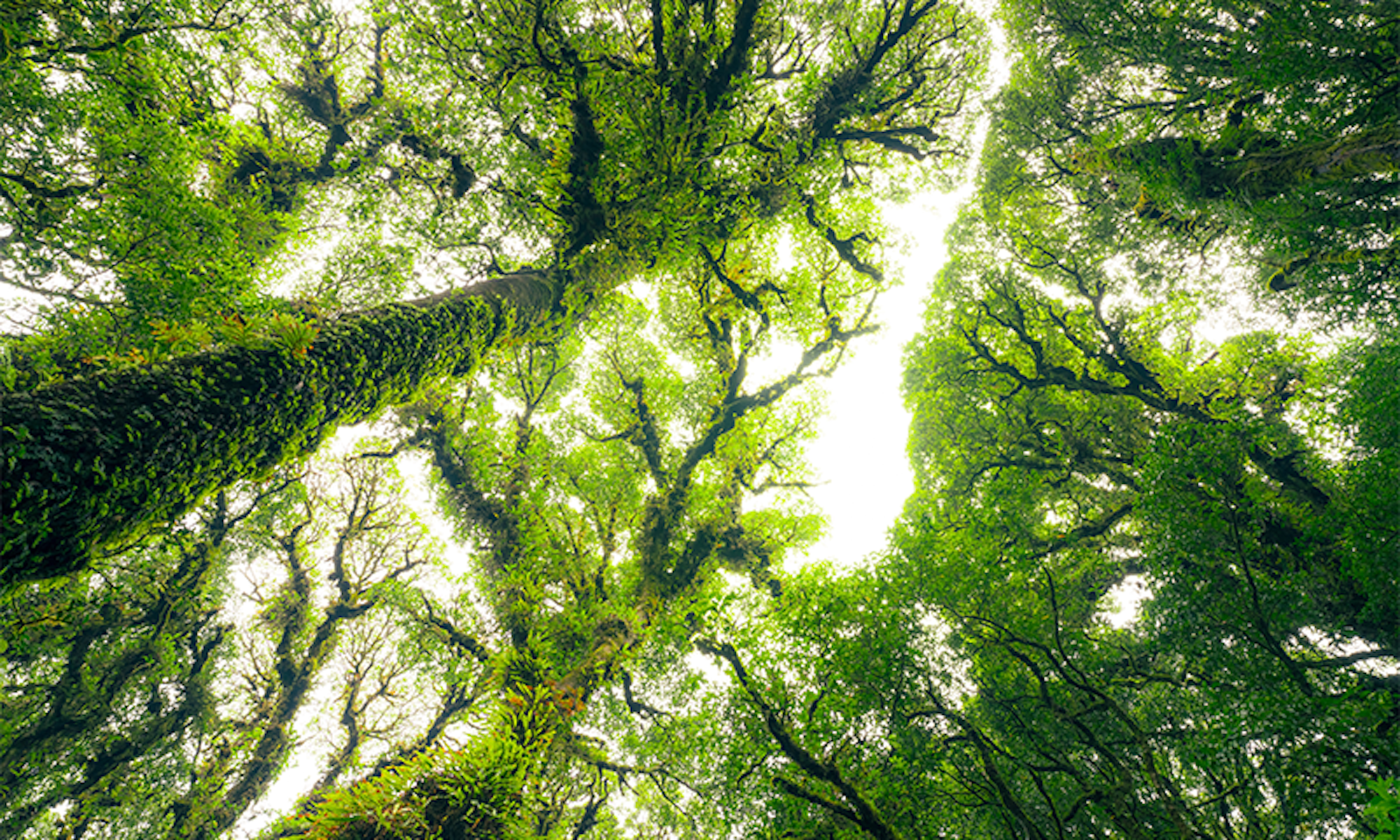Trees are among our most vital weapons in the fight against climate change. In one year, a single mature living tree can soak up more than 48 pounds of carbon, which it stores in its fibers until it decomposes or burns. Currently, trees and plants together absorb roughly 30 percent of the carbon dioxide humans cough into the atmosphere through industry and activity each year.
But trees’ carbon storage capacity is under threat as the Earth continues to warm. That’s because while trees soak up carbon dioxide through photosynthesis, they also release it back into the atmosphere through two processes, both of which are sensitive to rising temperatures. The difficulty has been calculating exactly how this balance will shift as the climate and atmosphere change.
Now a new study in Proceedings of the National Academy of Sciences finds that when average daily temperatures exceed 68 degrees Fahrenheit, and in conditions of drought, trees may push significantly more carbon dioxide into the atmosphere through one of these processes, called photorespiration. Current climate models miss this crucial detail, says Max Lloyd, the lead researcher of the work from Penn State University. “It isn’t something that we’ve been able to say definitively before. I think that’s a big insight” Lloyd says.
If temperatures continue to rise at the current pace, trees could absorb half as much carbon as they do today.
Photorespiration is a pesky “leak” in photosynthesis that happens only during the daytime, in the light. It increases as temperatures rise and water availability declines, but falls as atmospheric concentrations of carbon dioxide go up. A separate process called respiration releases CO2 back into the air as well, primarily at night.
The PNAS work adds to growing concerns that trees may lose their capacity to draw carbon from the atmosphere as the climate warms. A paper from 2021 in Science Advances, for example, found that by 2040, if temperatures continue to rise at the current pace, trees could absorb only 15 percent of human carbon emissions, half as much as they do today. That’s because as temperatures rise, trees’ nighttime carbon respiration rates rise too, while their capacity to store carbon through photosynthesis declines.
The Science Advances study, which examined 20 years of data from 250 sites, also found a clear temperature limit above which a kind of climate switch gets flipped and forests become net carbon sources instead of sinks. The Science Advances analysis didn’t account for variation in rates of photorespiration, which is what the PNAS study describes.
To complete their study, Lloyd and his colleagues developed a new chemical method for analyzing wood samples that can determine the rate of photorespiration over a tree’s lifetime. Most other methods of calculating trees’ carbon intake and output—including the Science Advances work—rely on extrapolating from forest surveys, which provide only a snapshot over a short period of time. The new method of extrapolating from wood samples allows for analysis of historical climates and at scale.
For the new study, Lloyd dug into a treasure trove of historic wood samples preserved at the Forest Products Laboratory of the University of California, Berkeley. The wood came from trees felled in the 1930s and onward. In some cases, the trees he analyzed had started life as saplings in the 19th century, when CO2 levels were 65 percent of current concentrations. Next, the researchers plan to study fossilized wood, which could give us an idea of what photorespiration looked like in the climates of the distant past.
Howard Griffiths, professor of plant physiology at the University of Cambridge, says it’s too soon to say what impact photorespiration will have on the net carbon budget. The new method of calculating photorespiration rates needs to be experimentally validated on living tree tissue, he says. Lloyd agrees that experimental validation is a high priority for future work.
This doesn’t mean that Griffiths or other plant scientists are optimistic about the outlook: “The greater threat to forest carbon sequestration is hydraulic failure during drought,” he warns. In hydraulic failure, the primary cause of death in old trees, a tree can no longer suck water out of the ground and distribute it efficiently, so it effectively dies of thirst. A decomposing tree returns the carbon it sequestered during its lifetime back into the atmosphere.
“I agree that warmer and drier climates will potentially have adverse consequences on forests globally,” Lidong Mo adds. Mo is an expert on forest ecology from ETH Zürich and is the lead author of a Nature study from 2023 that weighs in on what kinds of forests hold the greatest potential as carbon sinks to combat climate change. Its main finding was that, perhaps counterintuitively, the carbon sink potential is greatest when you allow a damaged forest—depleted by logging, fire, or drought—to recover naturally to maturity, as opposed to planting new trees on land that has been completely deforested.
It is a potent reminder that trees belong to complex forest communities that don’t behave uniformly. The language of “source” and “sink” can sometimes flatten this reality. In an email, Mo writes, “In the end, nature and climate are interconnected. We need nature for climate and we need climate action for nature.” ![]()
Lead image: Fahroni / Shutterstock
Prefer to listen?




























